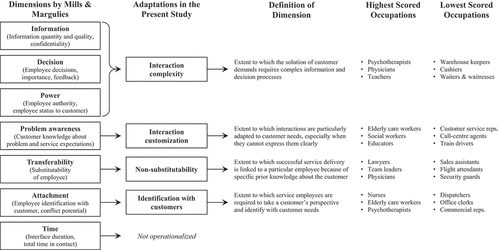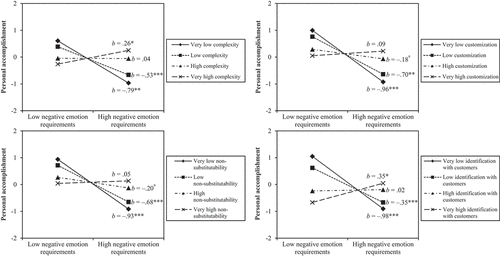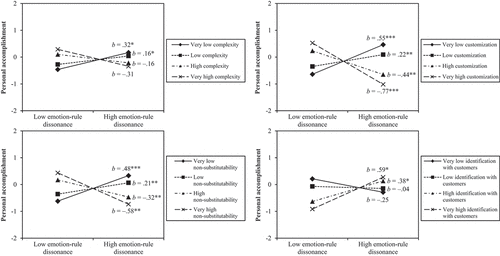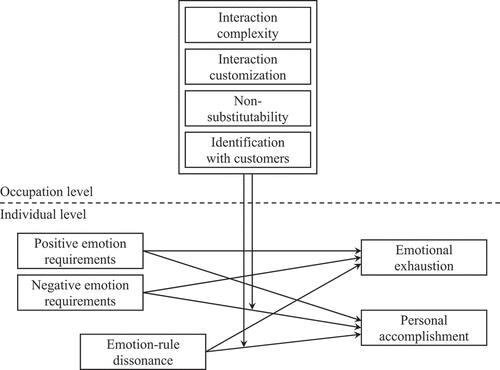Figures & data
Figure 1. Measurement of service interaction type based on the typology by Mills and Margulies (Citation1980) and scoring examples from the expert ratings.

Table 1. Summary of demographic sample characteristics and variations of measurements per study
Table 2. Means, standard deviations, internal consistencies, and intercorrelations among study variables
Table 3. Results of MSEM models predicting emotional exhaustion and personal accomplishment
Figure 3. Illustration of simple slopes for negative emotion requirements and customer interaction characteristics with values +/ – 1 SD and +/ – 2 SD. a This coefficient is greater than 1.96 times its standard error. It would therefore be significant in a two-tailed test. However, we do not declare this coefficient as significant because the slope is contrary to our hypothesis, which was tested with a one-tailed test.

Figure 4. Illustration of simple slopes for emotion-rule dissonance and customer interaction characteristics with values +/ – 1 SD and +/ – 2 SD.


